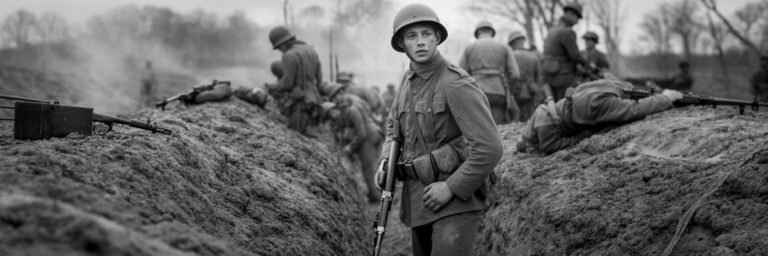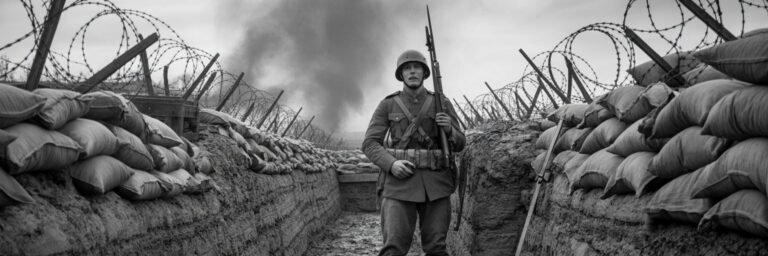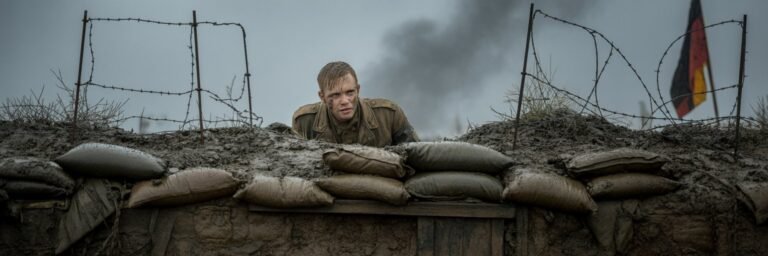INTRODUCTION
From 1914 to 1918, the world was thrust into the throes of a war that was as much universal in its scale as it was personal in its impacts. The First World War, a monumental historical event, forever reshaped not only geopolitical boundaries, but also numerous facets of everyday life. It shook the foundations of societies, significantly altering the way people lived, worked, thought, and interacted with each other. This article seeks to immerse the reader in the everyday realities of life during World War I (WWI), encompassing all aspects, from the poignant narratives of homefront hardship to the brutal realities of life in the trenches.
HISTORICAL BACKGROUND
WWI, referred to contemporaneously as the “Great War”, erupted in the summer of 1914, following the assassination of the Archduke Franz Ferdinand of Austria-Hungary. The war engaged the Central Powers, notably Germany, Austria-Hungary, and the Ottoman Empire, against the Allied Powers which included the United Kingdom, France, and Russia, later joined by the United States. Over four grueling years, it escalated into an all-encompassing conflict, impacting not only the battlefields but also the everyday lives of civilians around the world.
THEORIES AND INTERPRETATIONS
Historians tend to focus on political, military, and economic aspects when discussing WWI, often neglecting the quotidian aspect of the conflict. Some contemporary observers perceived the war as a catalyst for societal modernization, arguing that the necessities of war accelerated technological advances and restructured societal norms. This interpretation, termed the ‘progressive view’, while acknowledging the vast human suffering, highlights the emancipatory effects of the war, including women’s suffrage and workers’ rights.
Contrarily, more recent scholarship has adopted a ‘regressive view’, contending that the war’s impacts on everyday life were overwhelmingly negative. This body of thought underscores the economic hardship, loss of life, and psychological trauma endured by civilians, arguing that the war precipitated a profound societal disillusionment.
MYSTERIES AND CONTROVERSIES
Not without its share of ambiguities, one of the enduring mysteries of WWI is how ordinary citizens coped with the extraordinary circumstances imposed by the war. Some accounts suggest a certain adaptation to wartime conditions, a ‘normalcy under duress’, while others emphasize the overwhelming sense of despair and disruption.
One specific controversy revolves around the experience of women during the war. While some argue that WWI marked a significant stepping stone towards gender equality, with women entering the workforce in unprecedented numbers, others contend that this supposed emancipation was short-lived and superficial, merely an ad hoc response to a temporary labor scarcity.
SYMBOLISM AND CULTURAL SIGNIFICANCE
WWI permeated the cultural fabric of the time, profoundly impacting literature, arts, music, and mass culture. The war imagery symbolized a dichotomy of suffering and heroism. The widespread use of propaganda posters, deceptively blending nationalism with dehumanization of the enemy, is a stark example of these symbolic representations.
Literature and music offered an outlet for public sentiment, mirroring the collective state of mind. Poems, like Rupert Brooke’s ‘The Soldier’, evoke romantic notions of heroic sacrifice, while others, such as Wilfred Owen’s ‘Dulce et Decorum Est’, express grim disillusionment.
MODERN INVESTIGATIONS
Modern historiography prioritizes plurality in examining WWI, focusing on various social strata and regions to provide a comprehensive, multi-faceted narrative. Oral histories, personal correspondences, and diaries left by WWI witnesses have come under scrutiny, enabling a richer and more nuanced understanding of the period.
Recent investigations into the psychological impact of the war, like shell shock (now recognized as PTSD), reveal startling data about the war’s casualties beyond the battlefield.
LEGACY AND CONCLUSION
WWI’s seismic impact on everyday lives left a lasting legacy, redefining societal norms, expectations, and behavior. It marked the end of an era of relative peace and prosperity while paving the path for the uncertainties of the 20th century.
Yet, amidst the vast literature on WWI, the history of everyday life remains partially obscured by the shadow of major military and political developments. Rescuing this history from oblivion, dives deeper into a chapter of our collective history where ordinary people grappled with extraordinary times. And, perhaps therein lies the true measure of the Great War, a conflict that was not only waged on battlefields, but also in homes, in factories, and in hearts, forever shaping the contours of our world.






